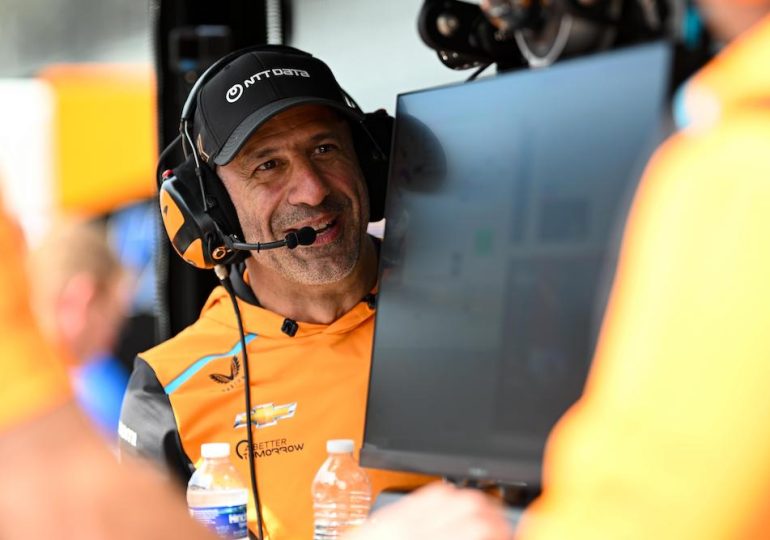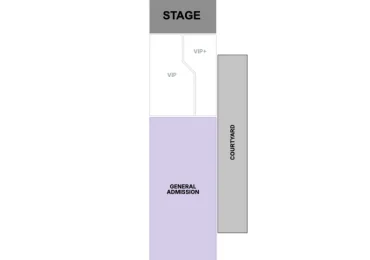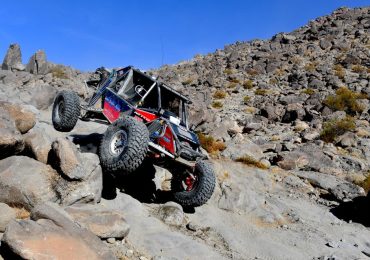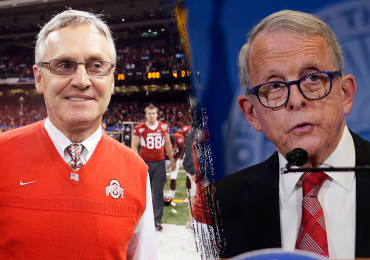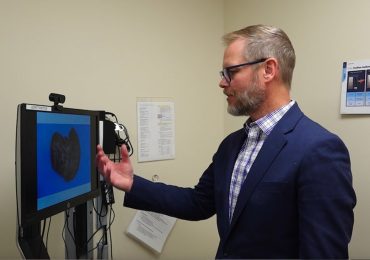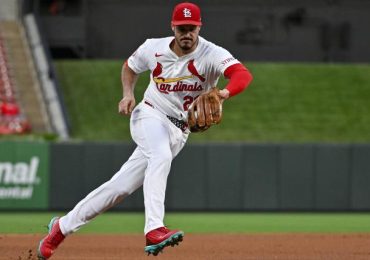No NTT IndyCar Series team has undergone a greater change of personnel from one offseason to the next than Arrow McLaren. It’s a trend the team owned by McLaren Racing wants to end with immediate effect.
The starting driver lineup of Pato O’Ward, David Malukas, and Alexander Rossi entering 2024 has seen O’Ward become the only carryover, with Nolan Siegel having replaced Malukas and Christian Lundgaard taking over Rossi’s seat. Atop the organization, Gavin Ward, Arrow McLaren’s team principal since 2023, has been replaced by his deputy, fan-favorite Tony Kanaan, who shifts upward from sporting director to his first-ever post as team principal.
Team founder and co-owner Sam Schmidt, along with co-owner Ric Peterson, have also departed the outfit after McLaren recently completed their acquisition of the team. Veteran Schmidt mechanic and damper engineer Brendon Cleave is gone along with fellow veteran Dave Higuera and Max Neyron, its director of operation and an employee since 2009. Race engineer Robert Gue left to join another team — said to be PREMA Racing — as well.
Coming off a turbulent year of frequent turnover, the team’s goal is to steady the program in 2025 with key additions and appointments. Getting closer to realizing its dream of winning championships and Indy 500s is the obvious target, and that will only become possible once the team is settled.
Among the leaders in that initiative is technical director Nick Snyder, who ranks as one of the team’s most tenured employees, and newcomer Scott Harner, who was hired as Arrow McLaren’s director of race operations.
Although Harner is a fresh face within the organization, his decades of experience as an IndyCar crew member, followed by long stretches as a team manager at Chip Ganassi Racing and other high-level roles at A.J. Foyt Racing and Andretti Global, has given the squad a vital layer of support for Kanaan and strengthened the team’s shop floor.
Having worked with Kanaan in the past, Harner is a familiar and trusted ally who links the operations side to its senior leadership, and with Harner and Snyder, who oversees all aspects of Arrow McLaren’s engineering group, the duo have come together to form a strong bond and lead the men and women who build and run the cars while Kanaan and general manager Brian Barnhart look after big-picture items. McLaren Racing CEO Zak Brown is also directly involved in steering the team in concert with Kanaan and Barnhart.
Altogether, Arrow McLaren has chosen its tribe to go racing with the Nos. 5, 6, and 7 cars, and is ready to turn the page.
“I think I can speak for everybody that Tony Kanaan’s new position is probably the most important position in the entire organization,” Harner told RACER. “From the shop floor, there was a fair amount of changes made before I got here, and I was happy to get on here, excited about the opportunity. I think there’s a lot of great pieces here. A lot of pieces have been added, from drivers to personnel. So far, I think we’re working well together, communicating well together. And it’s easy to say we’re gonna go and win the championship, but I really feel like this place has everything in place to do that. It’s just a matter of us working together and being able to get the job done.”
Within the crews of mechanics and engineers assigned to the three Arrow McLaren entries, the team has a number of new employees who’ve been onboarded since the season finale in September. O’Ward’s No. 5 Chevy has been largely unchanged, barring the shift of a few people to his car from other team cars.
Siegel has Heath Kosik — nicknamed ‘Keto’ — who joined from Ganassi, as his new car chief, and Steve Malich, who was part of Marcus Ericsson’s Indy 500-winning crew at Ganassi, as part of the moves to the No. 6. There’s also a big promotion for veteran performance engineer Kate Gundlach, who served on O’Ward’s car, as Siegel’s new race engineer.
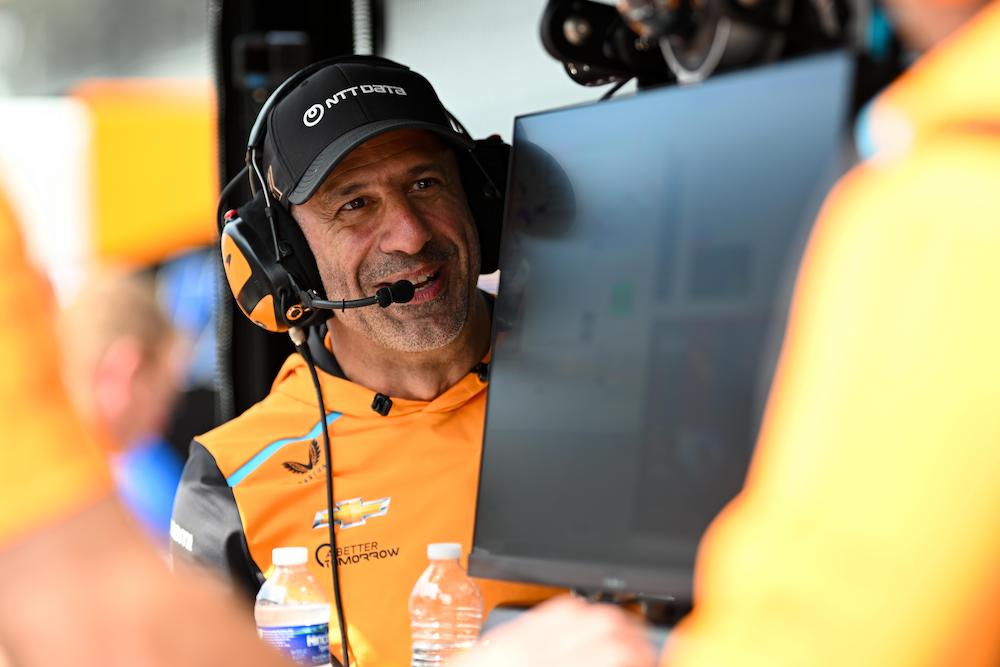 Kanaan adds ‘team principal’ to his resume for the first time this year. James Black/IMS Photo
Kanaan adds ‘team principal’ to his resume for the first time this year. James Black/IMS Photo
On Lundgaard’s No. 7, he’s had Jim Boman come across with him from RLL and IndyCar veteran Oren Trower, former Aston Martin Formula 1 mechanic Andy Moore, and new performance engineer Matt Sanderson — a staple in the USF Championships and Indy NXT — fill out the entry.
And while he isn’t new to the team, former Williams F1 mechanic Chris Stafford, who signed on late in 2022, is routinely hailed as a significant change-maker with Arrow McLaren’s car builds. The team also hired veteran crew chief Didier Francesia from Foyt to support Stafford and Harner as a shop-based resource.
“On the crew side of things, I definitely lean heavily on Chris Stafford and Nick (Snyder), and I think we’ve got three really good groups of crews together,” Harner said. “We’ve got a proper shop-based support group, which we haven’t had here, that I think will be hugely important with the schedule the way that it is.”
It isn’t as long or as busy as a NASCAR Cup Series calendar, but IndyCar will jam 17 races into a span of five months and 29 days, which has led a number of teams to recalibrate its workforce to support the sprint in and out of the shop between events.
“With the schedule, it’s like, what can we do to make it more bearable,” Harner continued. “Because we all know that we don’t have people lined up out the door anymore, like we used to, to come do this. So we really need to start focusing on taking care of the people that we have, and just try to make it a bit more livable. And even if that’s nothing more than you get home at midnight, okay, and you can sleep in a bit. We don’t have to be there at the crack of dawn.
“Having that shop crew being able to get cars unloaded, cars up on stands, underwings taken down, all those kind of things to get the ball rolling until the traveling crew come in. It’s just trying to buy time – which you can’t; you can never buy time – but at least trying to have some people power and some things in place to help more with our shop-based crew, is important. Wherever it may be, we can deploy people around and help out where we need it and just hopefully make the schedule a little bit more tolerable for everybody. I think we’re in a good place.”
In Snyder’s world of engineering and research and development and all of the technical aspects of IndyCar racing, there’s been a greater degree of continuity from 2024 to 2025.
“The core group is still the same group,” he said. “We’ve had a lot of people here for quite a while, and promoting from within is our key thing. All three race engineers now with Will Anderson and Kate Gundlach and Chris Lawrence all started with different roles in our program. Will started as a performance engineer. Kate was a PE for a long time. Chris, who was with Alexander (Rossi) last year, and Christian this year, started as a simulation engineer. So we like to build long-term relationships with our guys and grow them from within. We’ve got a pretty solid lineup there.
“Our performance engineers; we moved Mathias Nigel over to the 5 car. He’s been here for a long time. Eric Hestekin, he’s on the 6 car with Kate. He’s got a pretty wide background, spent some time at Boeing, has been with us for a couple seasons now, and then PE on the seven car is a guy named Matt Sanderson. He was previously at Andretti on their NXT program, so we gave an opportunity to go from NXT to IndyCar here.
“It’s a good mix of people coming from different industries and growing within the paddock. So I think we’ve got some pretty good depth. And then beyond that is trying to build up our overall engineering group. It’s a pretty brutal season from a race standpoint. We don’t have near the test days we used to have back a long time ago, so we’re trying to improve our simulation work, in CFD, our work on data science and AI, and exploring a little bit and finding other ways to make race cars go faster without actually running cars on track.”

